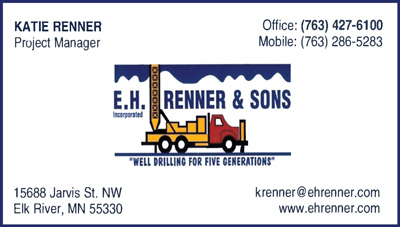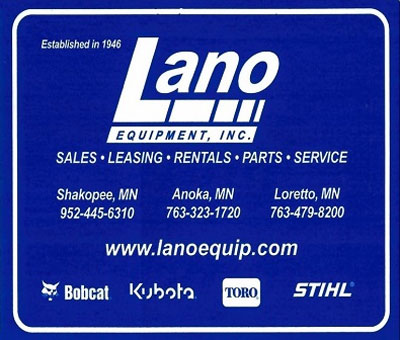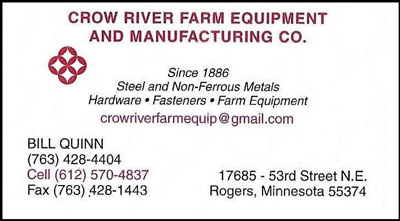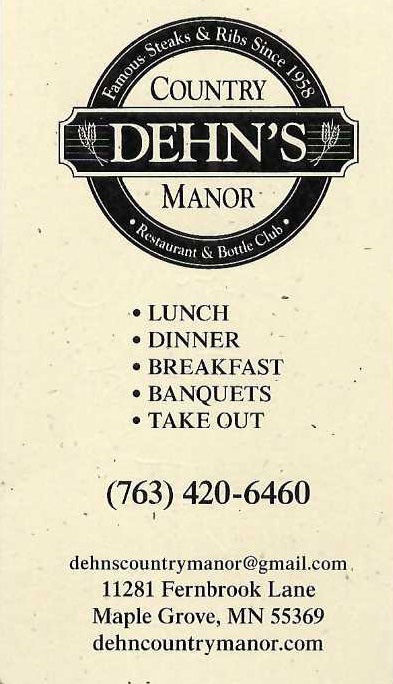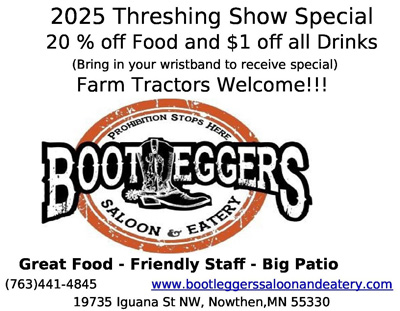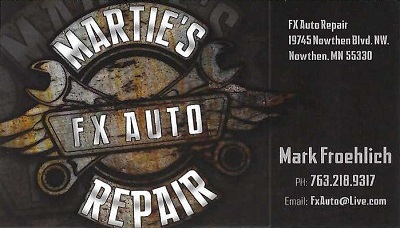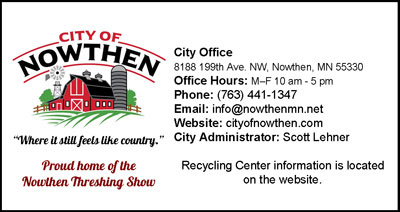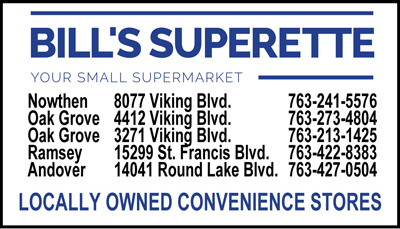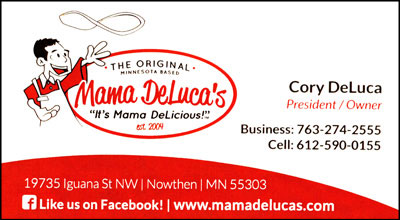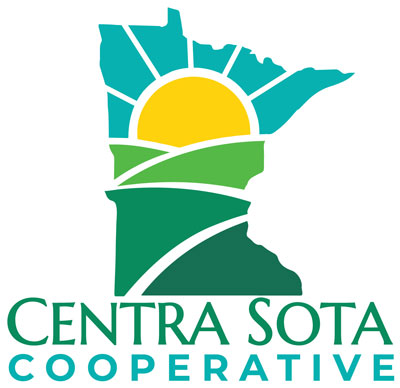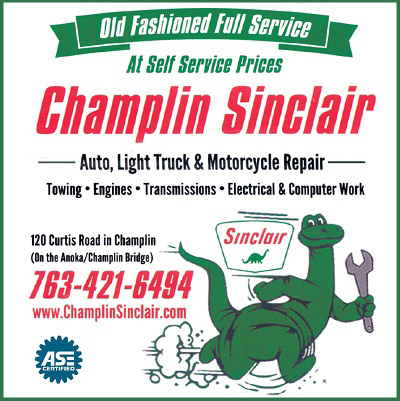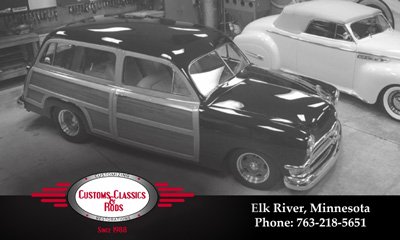The Nowthen Threshing Show Features International Harvester
August 16 - 18, 2013
International Harvester History
Founding of the company
The roots of International Harvester run to the 1830s, when Cyrus Hall McCormick, an inventor from Virginia, finalized his version of a horse-drawn reaper, which he field-demonstrated throughout 1831, and for which he received a patent in 1834. Together with his brother Leander J. McCormick (1819–1900), McCormick moved to Chicago in 1847 and started the McCormick Harvesting Machine Company. The McCormick reaper sold well, partially as a result of savvy and innovative business practices. Their products came onto the market just as the development of railroads offered wide distribution to distant market areas. He developed marketing and sales techniques, developing a vast network of trained salesmen able to demonstrate operation of the machines in the field.
McCormick died in 1884, with his company passing to his son, Cyrus McCormick, Jr. In 1902 the McCormick Harvesting Machine Company and Deering Harvester Company, along with three smaller agricultural equipment firms (Milwaukee; Plano; and Warder, Bushnell, and Glessner—manufacturers of Champion brand) merged to create the International Harvester Company. In 1919, the Parlin and Orendorff factory in Canton, Illinois was a leader in the plow manufacturing industry. International Harvester purchased the factory calling it the Canton Works; it continued production for many decades.
The golden years of IH
In 1926 IH’s Farmall Works began production in a new plant in Rock Island, Illinois, built solely to produce the new Farmall tractor. By 1930, the 100,000th Farmall was produced. IH next set their sights on introducing a true ‘general-purpose’ tractor designed to satisfy the needs of the average US family farmer. The resulting ‘letter’ series of Raymond Loewy-designed Farmall tractors in 1939 proved a huge success, and IH enjoyed a sales lead in tractors and related equipment that continued through much of the 1940s and 1950s, despite stiff competition from Ford, John Deere and other tractor manufacturers. In 1946 IH acquired a World War II defense plant in Louisville, Kentucky, which was enlarged, expanded, and re-equipped for production of the Farmall A, B, and the new 340 tractors. In 1974, the 5 millionth IHC tractor was produced at the Rock Island Farmall plant.
Throughout the 1960s and 1970s, despite good sales, IH’s profit margins remained slim. The continual adding of unrelated business lines created a somewhat unwieldy corporate organization, and the company found it difficult to focus on a primary business, be it agricultural equipment, construction equipment, or truck production. An overly conservative management, combined with a rigid policy of in-house promotions tended to stifle new management strategies as well as technical innovation. Products with increasingly ancient technology continued in production year after year despite their marginal addition to sales. Worse, IH now not only faced a threat of stiff competition in each of its main corporate businesses, but also had to contend with greatly increased production costs, primarily due to labor and government-imposed environmental and safety regulations.
Downfall and ending
In 1979 IH named a new CEO, who was determined to improve profit margins and drastically cut a ballooning cost structure. Unprofitable model lines were terminated, and factory production curtailed. By the end of the year, IH profits were at their highest in 10 years, but cash reserves were still too low. Union members became increasingly irate over production cutbacks and other cost-cutting measures. In the spring and summer of 1979, IH began short-term planning for a strike that seemed inevitable. Then on November 1, IH announced figures showing that president and chairman Archie McCardell received a $1.8 million (in 1979 values) bonus. McCardell sought overtime, work rule, and other changes from the UAW, which led to a strike on November 2, 1979.
Soon after, the economy turned unfavorable, and IH faced a financial crisis. The strike lasted approximately six months. When it ended, IH had lost almost $600 million (in 1979 value; over $2 billion today).
By 1981 the company’s finances were at their lowest point ever. The strike, accompanied by the economy and internal corporate problems, had placed IH in a hole that had only a slim way out. Things only got worse until 1984, when the bitter end came.
International Harvester, following long negotiations, agreed to sell its agricultural products division to Tenneco, Inc. on November 26, 1984. Tenneco had a subsidiary, J.I. Case, that manufactured tractors, but lacked the full line of farm implements that IH produced (combines, cotton pickers, tillage equipment etc.)
Following the merger, tractor production at Harvester’s Rock Island, Illinois Farmall Works ceased in May 1985. Production of the new Case IH tractors moved to the J.I. Case Tractor Works in Racine, Wisconsin. Production of IH Axial-Flow combines continued at the East Moline, Illinois combine factory. Harvester’s Memphis Works in Memphis, Tennessee was closed and cotton picker production was moved.
The truck and engine divisions remained, and in 1986 Harvester changed the corporate name to Navistar International Corporation (Harvester had sold the International Harvester name and the IH symbol to Tenneco Inc. as part of the sale of its agricultural products division). Navistar International Corporation continues to manufacture medium- and heavy-duty trucks, school buses, and engines under the International brand name.
Divisions and products
Agriculture
The International Harvester Agricultural Division was 2nd to the Truck Division but was the best-known IH subsidiary. When IH sold the agricultural products division to Tenneco in 1985, the International Harvester name and “IH” logo, went with it.
One of the early products (besides the harvesting equipment that McCormick and Deering had been making prior to the merger) from the newly created International Harvester Company was the Traction Truck: a truck frame manufactured by Morton Traction Truck Company (later bought by IHC) with an IHC engine installed.
From 1902, when IH was formed, to the early 1920s, the McCormick and Deering dealerships kept their original brands unique, with Mogul tractors sold at McCormick dealers, and Titan tractors at Deering dealerships, due to the still present competitiveness of the former rivals.
The early tractors
IH produced a range of large gasoline-powered farm tractors under the Mogul and Titan brands. Sold by McCormick dealers, the Type C Mogul was little more than a stationary engine on a tractor chassis, fitted with friction drive (one speed forward, one reverse). Between 1911 and 1914, 862 Moguls were built. These tractors had varied success but the trend going into the mid-1910s was “small” and “cheap”.
The first important tractors from IH were the model 10-20 and 15-30. Introduced in 1915, the tractors (which were smaller than their predecessors) were primarily used as traction engines to pull plows and for belt work on threshing machines. The 10-20 and 15-30 both had separate, but similar, Mogul and Titan versions.
Around this time, IHC purchased a number of smaller companies to incorporate their products into the IH dealer arsenal. Parlin & Orendorff aka P&O Plow and Chattanooga Plow were purchased in 1919. Other brand names they incorporated include, but are not limited to, Keystone, D.M. Osborne, Kemp, Meadows, Sterling, Weber, Plano and Champion.
In 1924 IH introduced the Farmall tractor, a smaller general-purpose tractor, to fend off competition from the Ford Motor Company’s Fordson tractors. The Farmall was the first tractor in the United States to incorporate a tricycle-like design (or row-crop front axle),which could be used on tall crops such as cotton and corn.
Following the introduction of the Farmall, IH introduced several similar looking “F Series” models that offered improvements over the original design (the original model became known as the “Regular”).
In 1932 IH produced their first diesel engine, in the McCormick-Deering TD-40 crawler. This engine started on gasoline, then switched over to diesel fuel. Diesel engines of this era were difficult to start in cold weather, and using gasoline allowed the engine to start easily and thoroughly warm up before making the switch to diesel in all weather conditions. In 1935 this engine was put in the International Harvester WD-40, becoming the first diesel tractor on wheels in North America (the world’s first diesel tractor was the German Benz-Sendling BS 6, introduced in 1922).
The letter and standard series
For model year 1939, industrial designer Raymond Loewy was hired to design a new line of tractors. The sleek look, combined with other new features, created what is known as the Farmall “letter series” (A, B, BN, C, H and M) and the McCormick-Deering “standard series” (W-4, W-6 and W-9). 1941 saw the introduction of the model “MD” the first rowcrop diesel powered tractor, it would be over a decade before IH’s biggest competitor (John Deere) would introduce a diesel option on their rowcrop tractors. The letter series tractors were updated to the “super” series in 1953 (with the exception of the A, which became a “super” in 1947, and the B and BN, which were discontinued in 1948) and received several improvements. Many of these tractors (especially the largest: the H, M and W models) are still in operation on farms today. Especially desirable are the diesel-powered MD, WD-6 and WD-9. These tractors carried forward the unique gasoline start diesel concept of the WD-40. The letter and standard series of tractors was produced until 1954, and was a defining product in IH history.
For 1955 in IH tractors, the numbered “hundred-series” was offered. Although given slightly different looks and few new features, they were still updates to the models introduced in 1939. The only new tractor in the 1955 lineup is the 300 Utility. In 1957 IH gave the tractor lineup another update by increasing power in some models, adding a new 230 Utility model, and adding new white paint to the grill and sides, and giving new number designations. This improved sales at the time, but IH’s inability to change and update was already showing.
60 Series recall
In July 1958, IH launched a major campaign to introduce a new line of tractors to revitalize slumping sales. At the Hinsdale, Illinois Testing Farm, IH entertained over 12,000 dealers from over 25 countries. IH showed off their new “60” series of tractors: including the big, first-of-its-kind, six-cylinder 460 and 560 tractors. But the joy of the new line of tractors was short lived. One of the first events that would eventually lead to the downfall of IH presented itself in 1959. In June of that year, IH recalled the 460, 560, and 660 tractors: final drive components had failed. IH, who wanted to be the first big-power manufacturer, had failed to drastically update the final drives on the new six-cylinder tractors. These final drives were essentially unchanged from 1939 and would fail rapidly under the stress of the more powerful 60-series engines. IH’s competitors took advantage of the recall, and IH would lose customers in the ensuing months, with many customers moving to John Deere‘s New Generation of Power tractors introduced in 1960.
1960s
Throughout the 1960s IH introduced new tractors and new sales techniques. As producing tractors was the lifeblood of the company, IH would have to remain competitive in this field. They both succeeded and failed at this goal. But farming was about to change, and IH and its competitors were in for a bumpy ride. In 1963 IH introduced the 73 hp (54 kW) 706 and 95 hp (71 kW) 806 tractors. In 1964 IH made its 4 millionth tractor, an 806. In 1965 IH introduced its first 100 hp (75 kW) two-wheel-drive tractor, the 1206. Another option became available in 1965 for the 706, 806 and the new 1206: a factory-installed cab (made by Stopler Allen Co.). This cab is often called the “Ice Cream Box” cab due to its shape. The cab could be equipped with a fan and heater. By 1967, over 100,000 models 706, 806 and 1206 were built.
1967 saw the introduction of the “56” series tractors as replacements for the successful and popular “06” series. These new “56s” were bigger and more powerful than the “06s”. The new models included the 65 hp (48 kW) 656, 76 hp (57 kW) 756, the 101 hp (75 kW) 856 and the 116 hp (87 kW) 1256. The “ice cream box” cab was still an option. In 1969 IH introduced the 1456 Turbo at 131 hp (98 kW). Also that year, the 91 hp (68 kW) 826 was introduced with the option of gearshift or hydrostatic transmissions. The “ice cream box” cab was dropped and replaced with the new “custom” cab made by Exel Industries, which could be equipped with factory air-conditioning, heat and an AM radio. Another milestone for IH was the 1970 introduction of the 1026 Hydro which was basically a hydrostatic version of the 1256, at that time the most powerful hydrostatic transmission tractor made in the US at 114 hp (85 kW).
1970s
In 1971 IH introduced the 66 series line. The new models included the 78 hp (58 kW) 766, the 101 hp (75 kW) 966, the 125 hp (93 kW) 1066 turbo, the 145 hp (108 kW) 1466 Turbo, and the 145 hp (108 kW) 1468V-8. The 130 hp (97 kW) 4166 4WD was also introduced. The 966 and 1066 were available with Hydro or gearshift transmissions and the choice of two-post ROPs or two different cabs, the “custom” and the “deluxe”. Both could be equipped with A/C, heat, and AM-FM radios.
In 1972 the 666 replaced the long-running 656, the 150 hp (110 kW) 1568V8 replaced the 1468, and the 160 hp (120 kW) 1566 and the 163 hp (122 kW) 4366 4WD were introduced. Also later that year, four-post ROPs replaced two-post; The “custom” cab was dropped and the “deluxe” cab was now painted red instead of white. Due to horsepower confusions the 966 and 1066 Hydro models were restriped; the Hydro 100 and the 666 Hydro became the Hydro 70. On February 1, 1974 at 9:00 am, the 5 millionth tractor came off the assembly line at the Farmall Plant in Illinois. IH was the first tractor manufacturer to accomplish this. Also in 1973, IH officially dropped the “Farmall” name from its tractor. This ended an era that began with the first Farmall “Regular” back in 1924.
The 230 hp (170 kW) 4568V8 4WD was introduced in 1975. In 1976 the entire tractor line got a new paint job and decal pattern. No longer were the side panels all white with chrome and black decals: they were now all red with a black striped sticker. This was done to clear inventory for the forthcoming “Pro Ag Line”.
In September 1976 IH released their 86 series “Pro Ag Line”. The models included the 786{roughly 105 hp}, 90 hp (67 kW) 886, the 101 hp (75 kW) 986, the 104 hp (78 kW) 186 Hydro, the 135 hp (101 kW) 1086, the 146 hp (109 kW) 1486 and the 161 hp (120 kW) 1586. These new tractors had a new cab dubbed the “Control Center” that came standard with A/C, heat, and several radio/CB options. The driver sat well ahead of the rear axle and the fuel tank was mounted behind the cab over the rear axle. This increased balance and ride. Also in 1976, the 62 hp (46 kW) 686 along with the “86” series four-wheel-drives were introduced, including the 4186, 4586, and 4786.
In 1977 International Harvester introduced the first Axial-Flow rotary combine. This machine, produced at East Moline, Illinois, was the first generation of over 30 years of Axial-Flow combines.
In 1979 IH introduced two all-new tractors: the 3388 and 3588, known as the 2+2 4wd line. These tractors were the result of taking two 1086 rear ends and hooking them together with a transfer case. A year later, the 3788 was introduced. Despite the fact these tractors proved well in the field, they never sold well.
1980s
As the 1980s began, IH was ready to climb from its own depression and become a leader once more. IH would face a stable economy, yet it would face an unknown fate. In September 1981, IH announced at a dealership meeting the new “50 Series” of tractors, which included the 136 hp (101 kW) 5088, the 162 hp (121 kW) 5288 and the 187 hp (139 kW) 5488. IH also released the “30 series”, which included the 81 hp (60 kW) 3088, the 90 hp (67 kW) 3288 the 112 hp (84 kW) 3488 Hydro and the 113 hp (84 kW) 3688. These new tractors would prove once again that IH had the innovation to come out on top. Designed by industrial designer Gregg Montgomery, whose firm later designed the Case IH “Magnum” series tractors, the new stylish design of the “50 Series and 30 series would change the look of tractors from that time. IH spent over $29 million to develop this new series, and the result was the last great lineup of tractors from IH.
There were many technology-related innovations in the new series. A computer monitoring system (“Sentry”) was developed, and IH became the first manufacturer to add a computer to a farm tractor. Other innovations included a “z” shift pattern, an 18-speed synchronized transmission, a forward air flow cooling system which sucked air from above the hood and blew it out the front grille, “Power Priority” 3-pump hydraulic system, color-coded hydraulic lines and controls, and a new rear-hitch system. The 50 Series had an unprecedented three-year or 2,500-hour engine and drive-train warranty, which would later become an industry standard. Although no new sales records were set, IH sold a respectable amount of these tractors during its short production time. IH also released the “60 series 2+2s” and planned on making the “Super70 series” 2+2s but only a handful of these exist today. On May 14, 1985 the last IH tractor rolled off the factory line, a 5488 FWA.
IH was well into the development of a new line of tractors that would revolutionize the ways of farming when the sale of the agricultural products division was announced. Many of these new features would find their way into the new series of MAGNUM tractors introduced by Case IH in 1987.
Brand names of the Ag division
IH over the years used a number of brand names to market their tractor and harvesting products:
- International (1902–1985)
- Titan (1910–1924)
- Mogul (1911–1924)
- McCormick–Deering (1923–1947)
- McCormick (1947–1958)
- Farmall (1924–1973)
- Fairway (1924–1938)
- Electrall (1954–1956)
Other agricultural products
Along with the prominent tractor division, IH also sold several different types of farm-related equipment, such as balers, cultivators, combines (self-propelled and pull behind), combine heads, corn shellers, cotton pickers, manure spreaders, hay rakes, crop dusters, disk harrows, elevators, feed grinders, hammer mills, hay conditioners, milking machines, planters, mills, discs, plows and various miscellaneous equipment.
Also produced were twine, stationary engines, loaders, and wagons.
Electrall
The Electrall system was introduced in 1954; it was a short-lived attempt to market electrically operated farm equipment and accessories. The system, co-developed with General Electric, consisted of a 208V three phase alternating current generator connected with electric cables to the device to be powered. The generator could even power a household. A 10 kW Electrall generator was an option on the Farmall 400 tractor, and there also was a 12.5 kW PTO-driven version. The possible applications of Electrall power were many, but few made it to market. IH marketing materials showed a hay baler being Electrall powered. One of the more novel applications of the Electrall was a device to electrocute insects in the field at night (basically like a modern-day bug zapper, but on a larger scale).
Vehicles
Light duty trucks
IH is often remembered as a maker of relatively successful and innovative “light” lines of vehicles, competing directly against the Big 3. The most common were pickup trucks. IH made light trucks from 1907 to 1975, beginning with the Model A Auto Wagon (sometimes called the “Auto Buggy”). Production commenced in in February 1907 at IH’s McCormickWorks in Chicago, although production was moved to Akron, Ohio in October that year. Powered by a horizontally opposed air cooled twin of around 15 hp (11 kW), it was a right hand drive model popular in rural areas for high ground clearance on the poor roads typical of the era. It featured a rear seat convertible to a carrier bed. The Auto Wagon was renamed the Motor Truck in 1910, and was a forerunner to the successful modern pickup truck. They were called IHC until 1914, when the ‘International’ name was first applied. The final light line truck was made on May 5, 1975.
IH also had early success with the “Auto Buggy”, which started production in February 1907. In the mid-1940s, International released their K and KB series trucks, which were more simplistic than other trucks released in that era. This was followed by the L Series in 1949, which was replaced by the R Series in 1952, followed by the S line in 1955. In 1957, to celebrate IH’s golden anniversary as a truck manufacturer, this was replaced by the new A line. ‘A’ stands for anniversary. With light modifications to its appearance but more serious changes under the shell (and a number of new names), this design continued in production until replaced by the 1100D in late 1969, which looked very similar to the Scout.
One of the company’s light-duty vehicles was the Travelall, which was similar in concept to the Chevrolet Suburban. The Travelette was a crew cab, available in 2 or 4 wheel drive. It was available starting in 1957, and was the first 6-passenger, 4-door truck of its time. The Scout, first introduced in 1961, is a small two-door SUV, similar to a Jeep. In 1972 the Scout became the Scout II, and in 1974 Dana 44 axles, power steering and power disk brakes became standard. After the Light Line pickups and Travelall were discontinued in 1975, the Scout Traveler and Terra became available, both with a longer wheelbase than a standard Scout II.
IH would abandon sales of passenger vehicles in 1980 to concentrate on commercial trucks and school buses. Today the pickups, Travelalls, and Scouts are minor cult orphaned vehicles. All were also available as rugged four-wheel drive off-road vehicles.
The Scout and Light Truck parts business was sold to Scout/Light Line Distributors, Inc. in 1991.
Medium/heavy duty
IH was an early manufacturer of medium/heavy duty trucks. Although based upon truck chassis, IH also became the leading manufacturer of the chassis portion of body-on-chassis conventional (type C) school buses. In 1962 IH offered the International Harvester Loadstar which became the premier medium-duty truck. In 1978 IH offered the International Harvester S-Series, which replaced the Loadstar in 1979.
With the truck and engine divisions remaining following the 1985 sale of the agricultural division, International Harvester Company changed their corporate name to Navistar International in 1986. Today Navistar International’s subsidiary, International Truck and Engine Corporation, manufactures and markets trucks and engines under the International brand name.
The Power Stroke diesel engine, which is a trade name of Ford Motor Company, is manufactured by International Truck and Engine Corporation in Melrose Park, IL., for use in Ford heavy-duty trucks, vans and SUVs.
Military
IH manufactured heavy vehicles for military use, including the 1942 M5 Tractor and 2.5-ton trucks for the US Navy & Marines.
In early 1951, the United States Army through the Springfield Armory contracted International Harvester to produce M1 Garand rifles, and from 1953 to 1956 produced 337,623 rifles in total, according to the Army Ordnance Department.
International Harvester Australia, a subsidiary of the US Manufacturer, had a long relationship with the Australian Army with the US designed AS series trucks in the early 1950s. The AS164 2X4 used as a tractor unit [15] and the 2X4 AS161 used as a trayback troop transport.
Truck Australian No.1
The association between International Harvester Australia and the Australian Army developed and in conjunction with the Army Design Establishment of the Australian Commonwealth Department of Supply, designed and constructed a range of trucks for the Australian Army. With body loosely based upon the design of cab 13 of the Canadian Military Pattern truck the first prototype built in 1959 was the Truck Cargo, 2 1/2 Ton, General Service, Australian No.1 Mk1. which was followed by the Mk2 a variant where a mid mounted 20,000 pound winch was added resulting in the first production model the Mk3 entering service in 1963 just in time for Australia’s entry into the Vietnam War. A 5 Ton 6X6 version was to follow with 3 major variants the Truck Cargo 5 Ton with winch F1 [19] which replaced the Mk3 in Vietnam service. The F2 a tipper version that replaced the International Harvester AB160 “teaspoon Tipper” in both Vietnam and Borneo theatres of operations and the F5 wrecker with a lack of 4X4 2 1/2 ton trucks available because of the Vietnam War, the Mk3 was supplemented with further 4X4 production with the updated Mk4 version which shared the cab with the 6X6 variants Production of The Australian No.1 range of trucks were produced until 1973. The Mk3, Mk4, F1, F2 and F5 saw service until the late 1980s.
Motor homes
IH made some motor homes circa 1970. Some had unique designs, being fabricated of fiberglass.
Home
Lawn and garden
IH branched out into the home lawn and garden business in the 1960s with its line of Cub Cadet equipment, which included riding and walk-behind lawn mowers and snow blowers. Also produced were compost shredders, rotary tillers, Cadet garden tractors, and power washers.
The Cub Cadet line was sold to MTD Products in 1981.
Home appliances
Although best known for farm equipment, IH produced home appliances for farmers and non-farmers alike. This included refrigeration equipment such as refrigerators, air conditioners and freezers. IH had a refrigeration division of its own, as did other vehicle manufacturers of the time: Ford had Philco, Chrysler had Airtemp, General Motors had Frigidaire, Nash-Kelvinator Corporation (and then American Motors) had Kelvinator, Studebaker had the Franklin Appliance Company, Crosley had Crosley.
The IH appliance division had originally been developed to manufacture commercial-grade items to farmers, most of whom had just received electricity by way of the many electrification projects in the U.S. before and after World War II. Among the offerings were milk coolers and walk-in freezers for produce and meat. Later on, IH courted the farmer’s wife with kitchen refrigerators available in the latest designer styles. The IH spokeswoman for these products was Irma Harding, a factory trademark. These products were introduced in 1947 and sold for less than 10 years. The refrigeration division was sold to Whirlpool Corporation in 1955. Since the time of production was short, IH appliances are rare today.
Information provided from http://en.wikipedia.org/wiki/International_Harvester
|


















